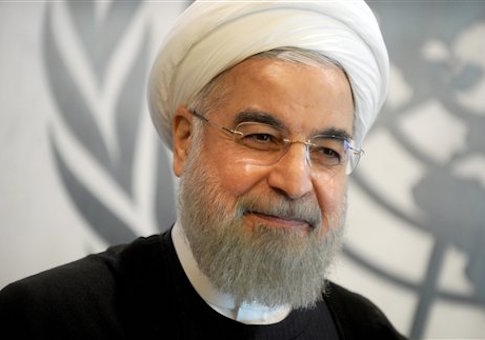Senior Obama administration officials, under the threat of a subpoena, were forced to appear on Capitol Hill on Thursday to explain why lawmakers and the American public were kept in the dark about a $1.7 billion cash payment to Iran that has been widely viewed as a ransom to free imprisoned U.S. hostages.
Four senior administration officials declined to provide in-depth explanations of how U.S. funds were transferred to Iran, but said that at least $1.3 billion was withdrawn from a U.S. taxpayer fund and sent to Iran only after it released the hostages.
The payments to Iran were made in hard currency after the United States delivered the funds to European banks. The money was converted into hard currency and bank notes before being transferred to an official from the Central Bank of Iran for transport to Tehran, according to the officials.
Administration officials confirmed that the $1.7 billion payment only went through once the United States was able to secure the release of several U.S. hostages being held in Iran—though the officials would not say this amounted to a ransom.
The Obama administration also could not guarantee lawmakers that the money would not be spent by Iran to fund terror operations.
These disclosures appear to confirm key details about the payment that the administration had either denied or declined to elaborate on for months.
Details are only becoming public now following several news reports and leaks from Congress about the source of the payment, which has been shrouded in mystery since January, when it was first announced.
"This committee requested records … more than a month ago and to date the self-proclaimed most transparent administration in our history has failed to provide any, not one document to this committee," said Rep. Sean Duffy (R., Wis.), a member of the House Financial Services Committee, during the hearing.
"The witnesses today only agreed under threat of subpoena" to appear before Congress, Duffy said.
The testimony by these administration officials is likely to fuel claims that the payment amounted to a ransom, following the admission that the administration only went through with the cash delivery after it was able to confirm that the U.S. hostages had left Iran.
"You can’t tell me that you guaranteed our prisoners would have been released had your money not been sent," Duffy said to Christopher Backemeyer, a deputy assistant secretary for Iranian affairs at the State Department.
Backemeyer also could not provide a guarantee that the money would not be spent by Iran on terrorist operations.
"I can’t speak to every dollar that’s going to go in or out of Iran," he said.
"There is a risk you have taken in providing $1.7 billion to the leading state sponsor of terrorism in the world," Duffy said.
European officials handed off the first payment of $400 million in cash to Iran on Jan. 17, only after Iran agreed to release the U.S. hostages following an evening of negotiations that included Secretary of State John Kerry, officials said.
After converting the U.S. funds to European bank notes and cash, the money was given to an "official from the Central Bank of Iran for transfer to Tehran," according to Paul Ahern, assistant general counsel for enforcement and intelligence at the Treasury Department. "The funds were under U.S. government control until their disbursement."
The remaining $1.3 billion was withdrawn from a U.S. taxpayer fund operated by the Treasury Department and sent to Europe. Once there, the money was converted into foreign currency and transferred to a representative of Iran's central bank on Jan. 22 and Feb. 5.
Information about the payment and the circumstances surrounding it remains a mystery.
The administration officials made the decision to pay Iran in cash, even though other options existed.
"Iran had to have it in cash," Ahren said. "Iran was very aware of the difficulties it would face in accessing and using the funds if they were in any other form than cash, even after the lifting of sanctions."
A cash delivery "was the most reliable way that they received the funds in a timely manner and it was the manner preferred by the relative foreign banks," Ahren said.
"For them," Backemeyer added, "the critical need was they [Iran] got immediate access."
The administration officials would not provide in-depth details, citing diplomatic sensitivities.
"My guess is, if any private citizen had done what this administration did, they’d be indicted on money laundering and the administration calls in diplomacy," said Rep. Jeb Hensarling (R., Texas), who questioned why the deal was hidden from the public
"Why did the administration go to such great lengths to hide it from the American people?" Hensarling asked. "Why did I have to threaten subpoenas to get the administration to show up in the first place?"
The State Department’s Backemeyer explained that some details could only be divulged in a classified setting.
"There will be limitations to what I and my colleagues can say in an open setting," he explained. "There are a number of litigations and diplomatic sensitivities that could jeopardize U.S. interests if we were to go into too much detail."
When asked why the United states agreed to pay $1.3 billion in interest to Iran from a taxpayer fund, a State Department official bristled.
"The details of why we settled for this amount are litigation sensitive," said Lisa Grosh, a legal adviser in the State Department’s office of international claims and investment disputes. "Iran’s lawyers would try to use my words or maybe even your words against us to help their position at the [claims] tribunal. I believe this settlement was the best thing for the United States."
